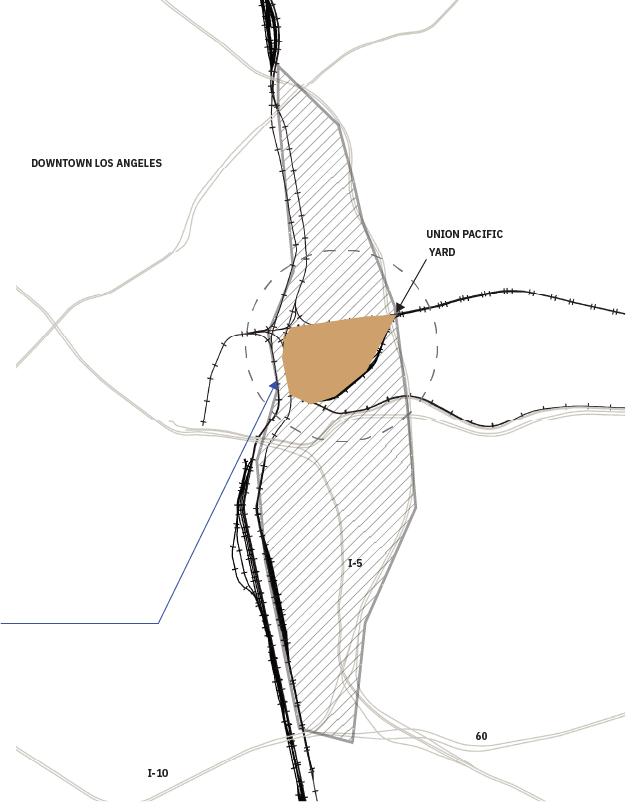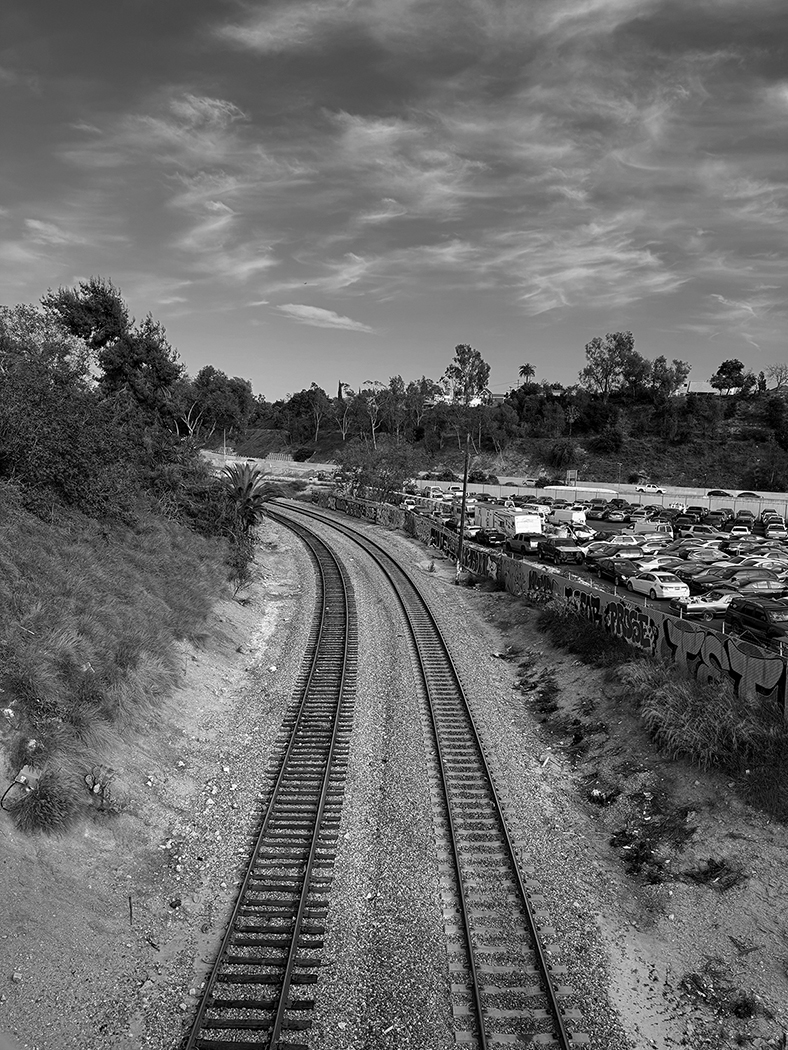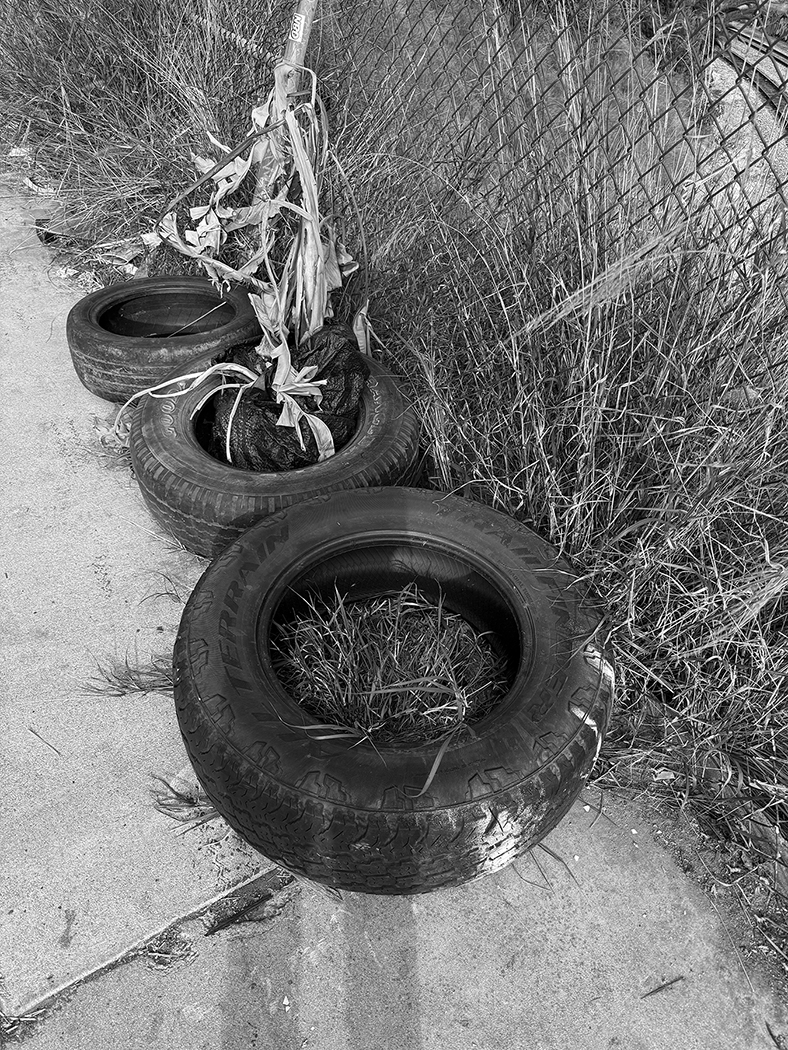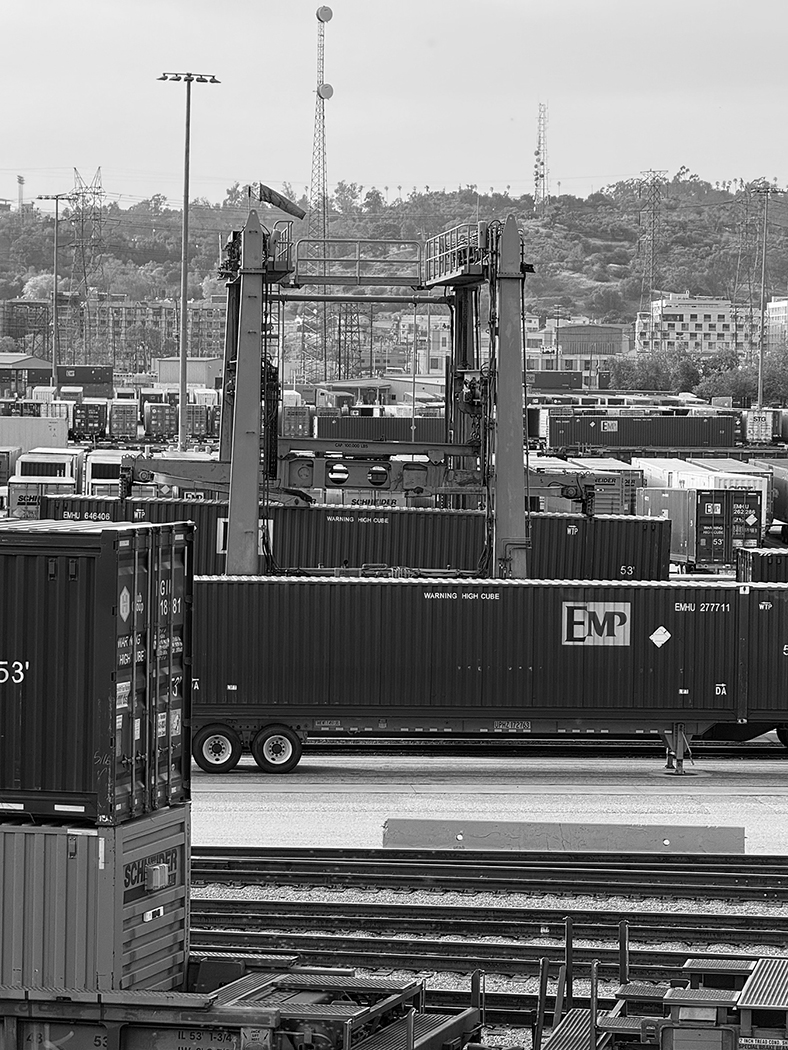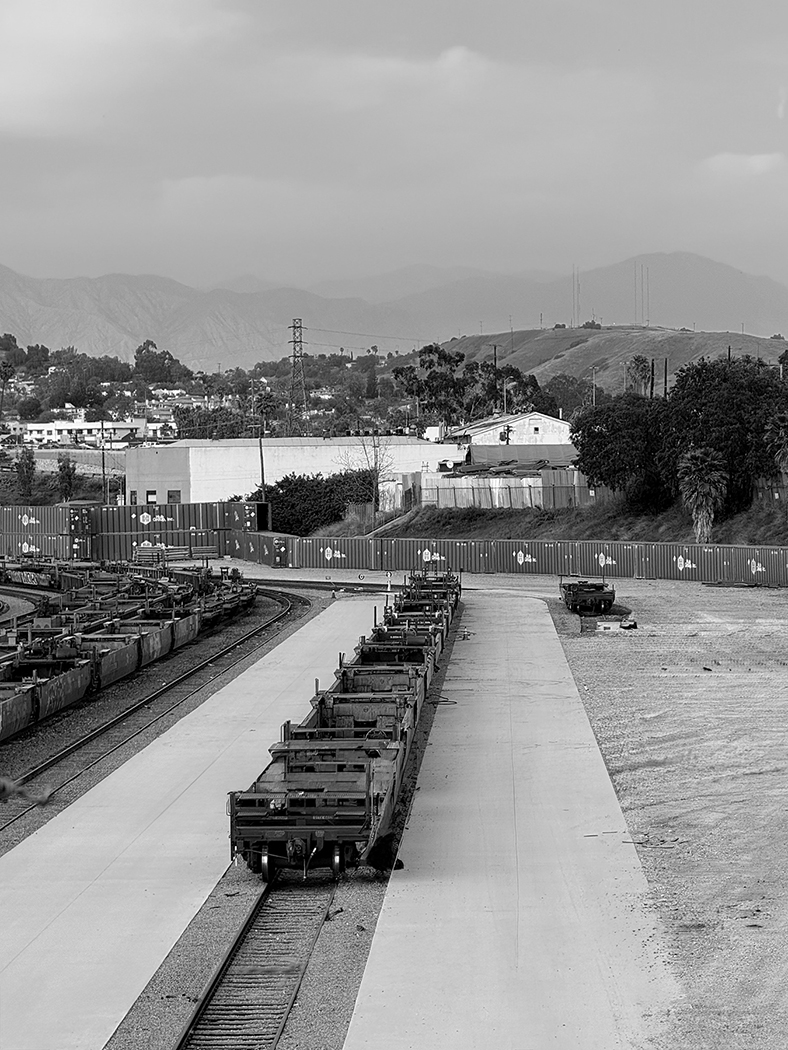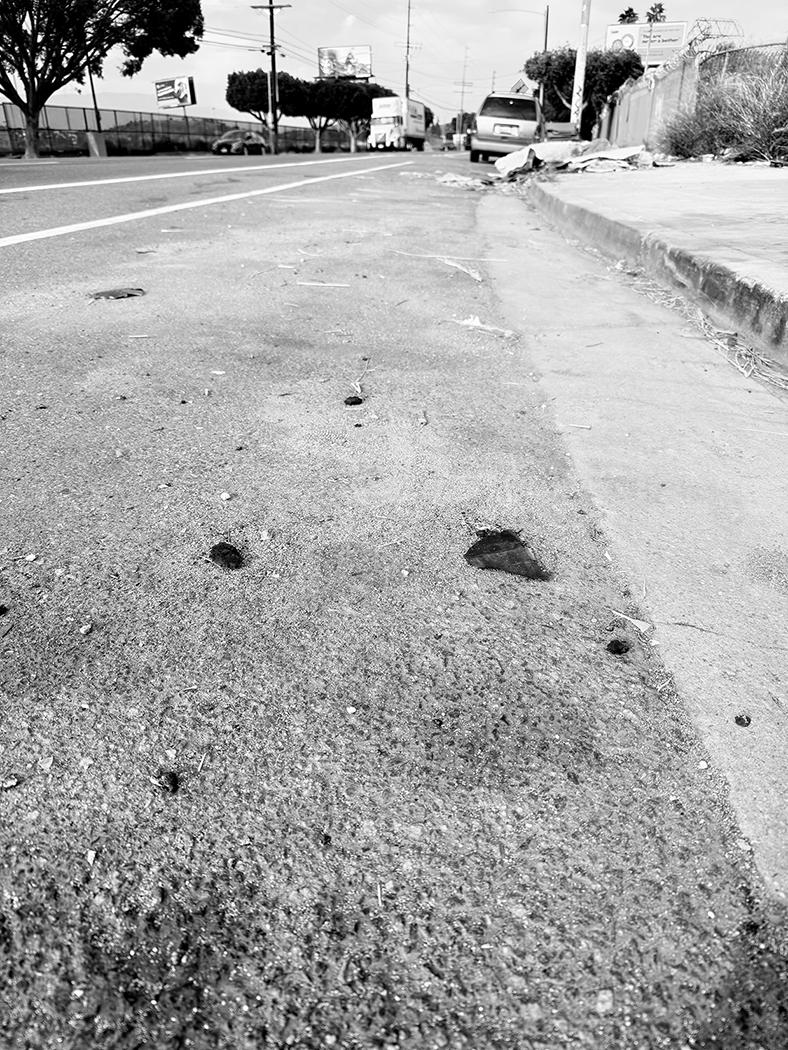Ports & Freight Logistics
Los Angeles stands as a key hub for logistics and freight movement, anchored by the Ports of San Pedro and Long Beach and LAX. These major gateways facilitate the flow of goods in and out of the region, feeding into a sprawling network of freeways, railways, and distribution centers. This system not only drives the city’s economy but also reshapes its urban environment, leaving a mark on the daily lives of its residents.
PURPOSE
This catalog dives into the logistics ecosystem of Los Angeles, tracing the movement of freight and the paths it takes through the city. It visualizes the flow of goods with data, charts, and diagrams, while also spotlighting the environmental consequences, including pollution and its impact on communities. The goal is to capture the weight of infrastructure and freight’s role in shaping Los Angeles, offering a clearer view of the interplay between movement, industry, and urban life.
Union Pacific Rail Yard
The Taylor Yard, located in Downtown Los Angeles, is a pivotal hub in the region’s freight transportation network, connecting the Ports of Los Angeles and Long Beach with inland warehouses, industrial facilities, and distribution centers. Strategically positioned near key highways like the I-5 and rail corridors, the yard enables seamless intermodal transfers between rail and trucking systems. Characterized by its expansive layout of parallel tracks, container storage zones, and loading docks, Taylor Yard plays a significant role in supporting Southern California’s logistics operations and bolstering the national supply chain. Its location and operational capacity make it a vital infrastructure asset in one of the busiest freight corridors in the United States.
Ports of Los Angeles
The Port of Los Angeles leads with approximately 13.08 million TEUs (twenty-foot equivalent units), followed closely by the Port of Long Beach at 8 million TEUs, collectively ranking them among the top ports globally. Meanwhile, Los Angeles International Airport (LAX) focuses primarily on air freight, handling approximately 2.13 million metric tons of cargo annually, making it a critical hub for high-value, time-sensitive goods like pharmaceuticals, perishables, and electronics. Together, these logistics hubs not only anchor Southern California’s economy but also play a pivotal role in shaping the flow of goods in the global market.
The Ports of Los Angeles and Long Beach are two of the largest and busiest ports in the world, serving as critical gateways for trade between the United States and Asia. Together, they handle a significant percentage of the nation’s cargo, contributing to nearly 40% of all containerized goods entering the U.S.
IMPACTS ON
L.A. POPULATION
Impact of Freight Transportation on Air Quality in Los Angeles
Freight transportation in Los Angeles significantly contributes to air pollution, posing serious challenges to air quality and public health. Diesel-powered trucks and trains are major sources of harmful emissions, releasing approximately 14.5 tons of nitrogen oxides (NOx) and 0.27 tons of particulate matter (PM) daily. These pollutants exacerbate respiratory issues, cardiovascular diseases, and other health concerns, particularly for communities residing near freight corridors such as the I-710 freeway, rail yards, and port areas.
To address these environmental challenges, initiatives like the Clean Truck Program aim to phase out older, polluting diesel trucks and replace them with cleaner, more efficient alternatives, including electric and hydrogen-powered vehicles. Additionally, shore power systems at ports enable ships to plug into the electrical grid while docked, significantly reducing emissions during cargo handling. These efforts not only improve environmental conditions but also demonstrate a commitment to creating a sustainable and healthier future for Los Angeles.
TIRE DETRITUS COLLECTION
Observations from findings:
DTLA Railyard (65%) – The highest concentration of tire waste, likely due to constant heavy truck and rail freight movement, sharp turns, braking, and wear from industrial activity.
Ports (25%) – A significant amount of tire debris, which makes sense given the volume of container trucks moving in and out of the ports, along with long-haul freight vehicles.
West LA Streets (10%) – The lowest percentage, but still relevant, indicating that even urban streets experience tire wear pollution, though at a lesser intensity than freight-dense areas.
Environmental Impact
The higher percentage of tire waste in DTLA railyards and ports suggests that freight infrastructure contributes disproportionately to microplastic pollution from tire wear. This aligns with studies showing that non-exhaust emissions (like tire wear) are a rising source of urban pollution.
Urban Health Concerns
Since tire particles can become airborne, this distribution pattern might correlate with higher respiratory health risks in freight-heavy zones.
Freight-heavy zones like DTLA Railyard, Ports of Los Angeles/Long Beach, and major highways (I-710) are hotspots for these emissions, contributing to pollution disparities in nearby communities.
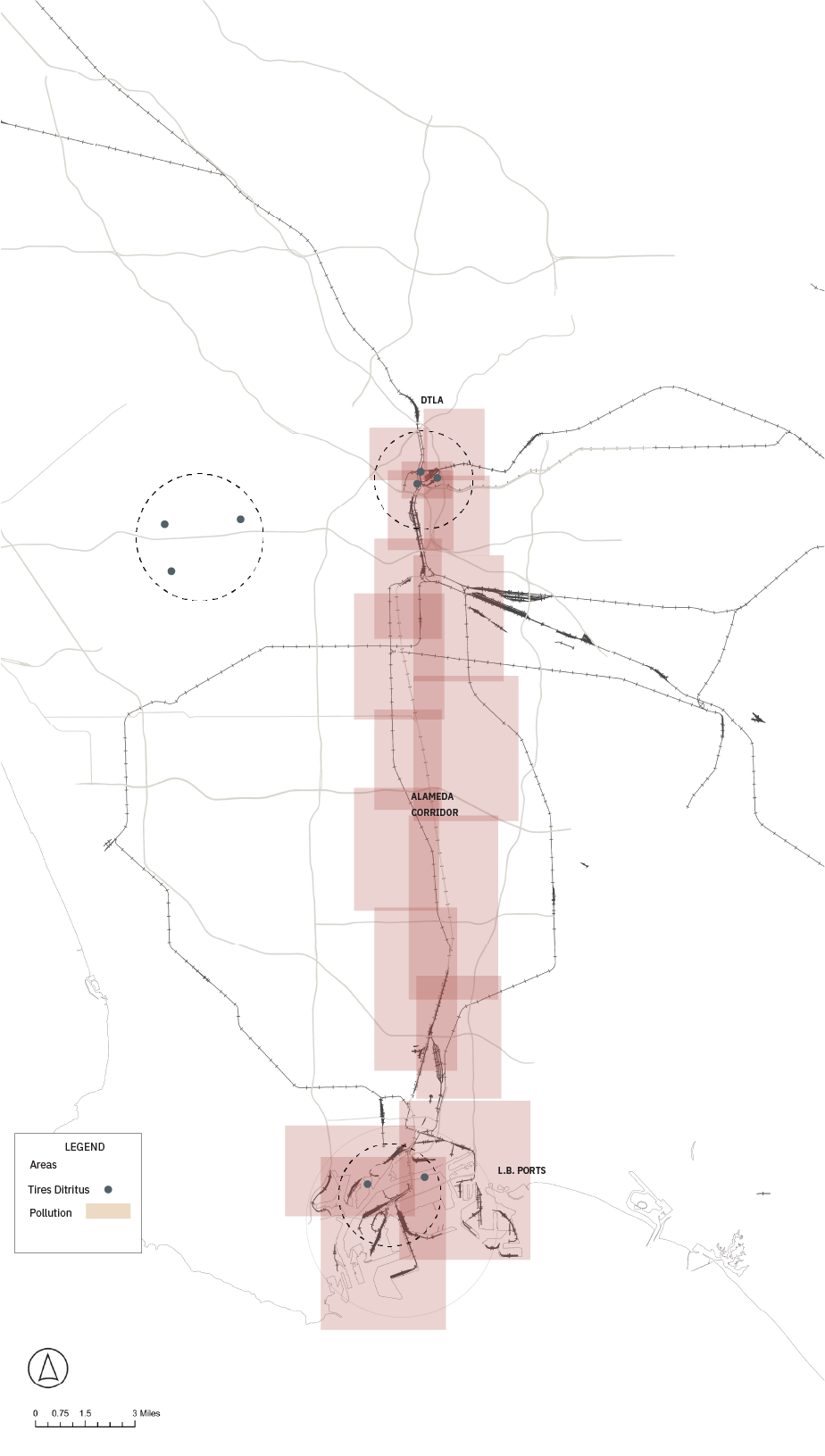
Union Pacific Railyard
Union Pacific’s Hobart Yard covers about 250 acres, making it one of the largest intermodal rail yards in the U.S. The site contains over 1.5 million cubic feet of concrete and 50,000 tons of steel, creating a massive industrial landscape. While it drives freight movement across the country, it physically divides neighborhoods and contributes heavily to pollution and environmental degradation in East Los Angeles.
Size Comparison
50,000 tons of steel ≈ weight of 330 fully loaded Boeing 747 airplanes.
1.5 million cubic feet of concrete ≈ enough to fill 15 Olympic swimming pools.
Local impact
Union Pacific’s rail yards cut through neighborhoods, creating physical and social barriers that limit community connectivity. Constant diesel emissions and industrial noise expose nearby residents to higher rates of asthma, heart disease, and other health issues. Despite modernization efforts, the environmental and health burdens remain concentrated in historically underserved areas, deepening cycles of environmental injustice.
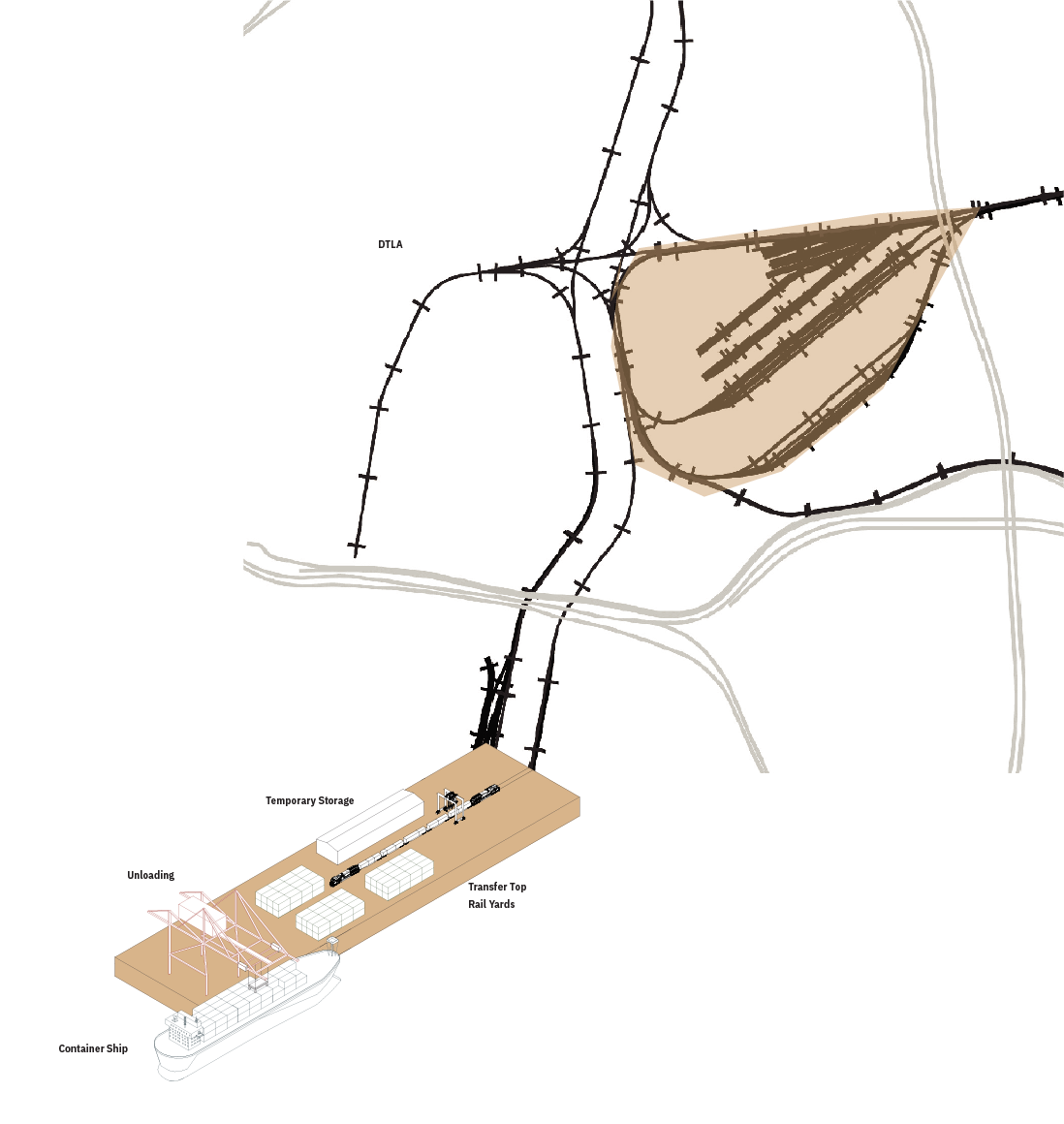
Port & Freight Logistics Proposals
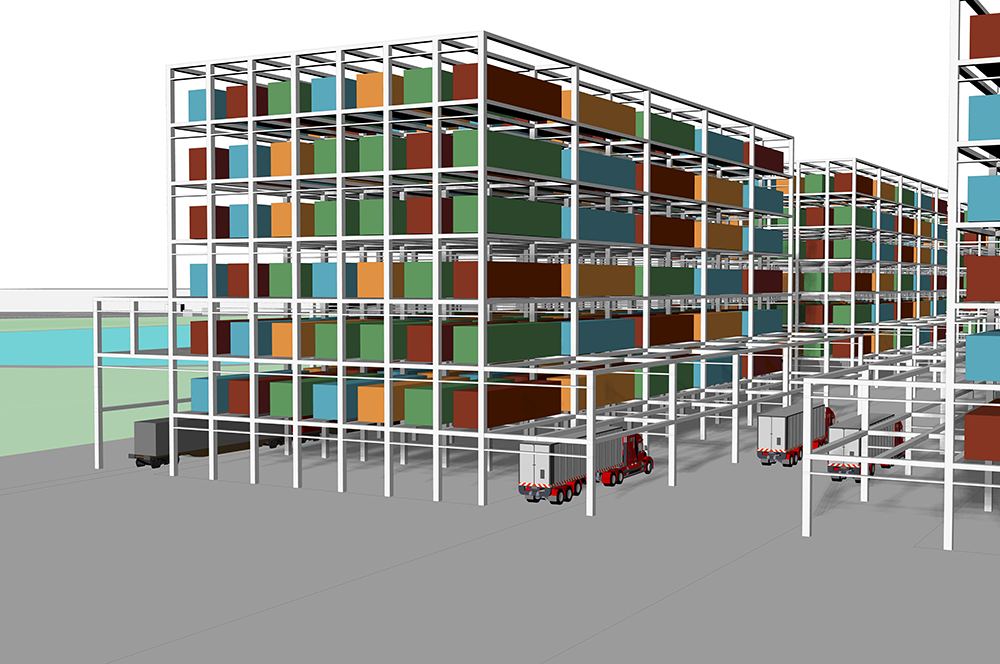
COMPRESSED LOGISTICS HUB:
Land Reclaimed
This project reimagines the Union Pacific Railyard in Downtown Los Angeles by radically compressing its spatial footprint through the vertical stacking of freight infrastructure. By reducing the railyard’s surface area by 80%, the design frees up vast tracts of land that were once inaccessible to the public. Multi-level container warehouses replace traditional horizontal train-to-truck operations, allowing goods to be unloaded directly from trains, lifted, stored, and distributed across stacked platforms. This verticalization of freight operations maintains logistical efficiency while releasing the ground plane for new uses. The reclaimed land is divided into two major civic components. The southern edge transforms into a linear park that reconnects
Boyle Heights with the city center—an effort to repair the environmental and social rift caused by decades of industrial isolation. On the northern side, a retail corridor lines the street edge, activating the site and providing opportunities for local business. Together, these interventions stitch the site back into the urban fabric and address the long-standing imbalance between industrial necessity and public access.
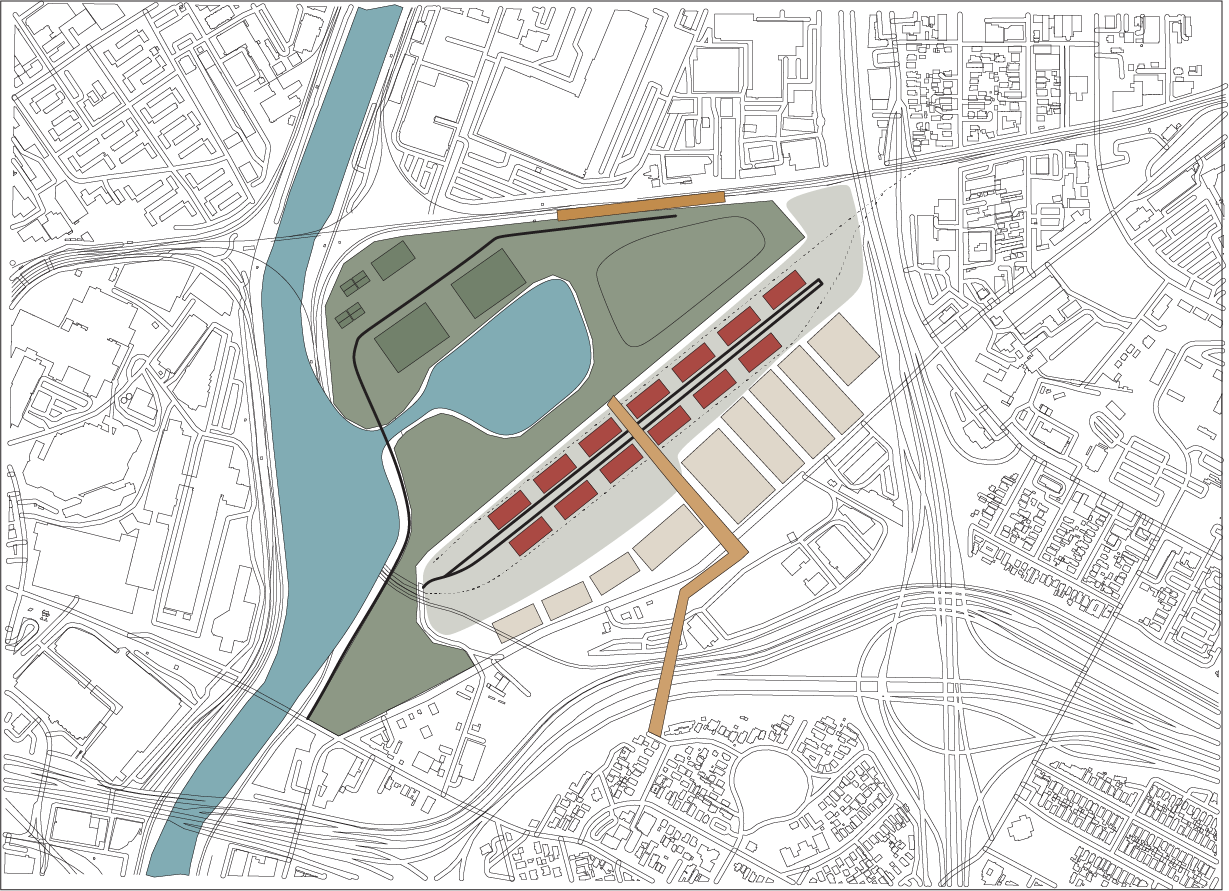

MULTILEVEL CONTAINER WAREHOUSES
The multilevel container warehouse compresses the railyard’s operations into a vertical structure. Trains enter at ground level, where containers are unloaded on one side and lifted by automated cranes to upper levels for short-term storage. On the other side, trucks access the building to load containers directly from storage. Each level is organized by destination, reducing wait times and improving flow. The building is designed with open frames and stacked bays, making the movement of freight visible from the outside. This vertical system maintains capacity while freeing up land below for public use. It turns what was once a closed, sprawling yard into a more compact, legible, and efficient infrastructure.




